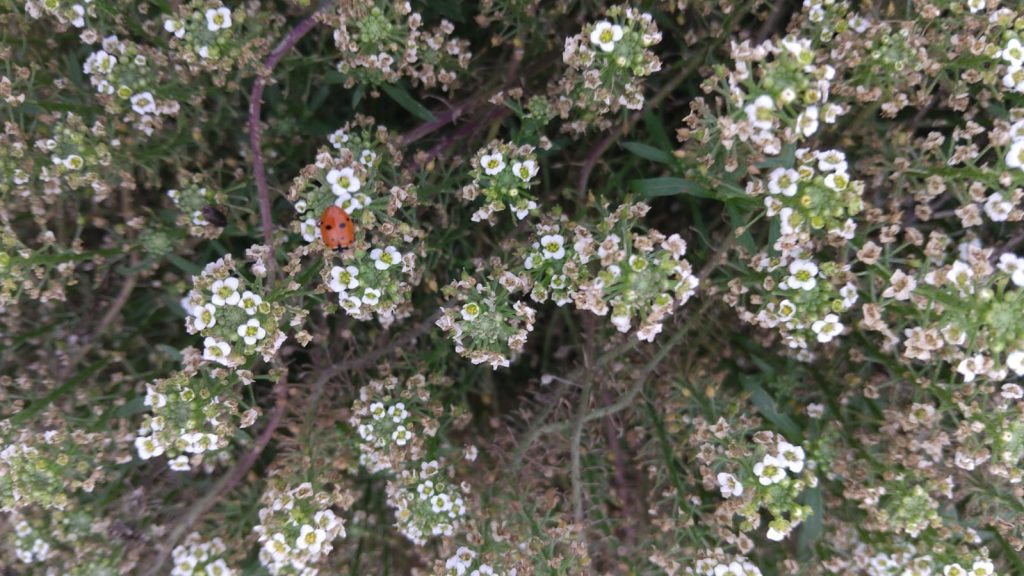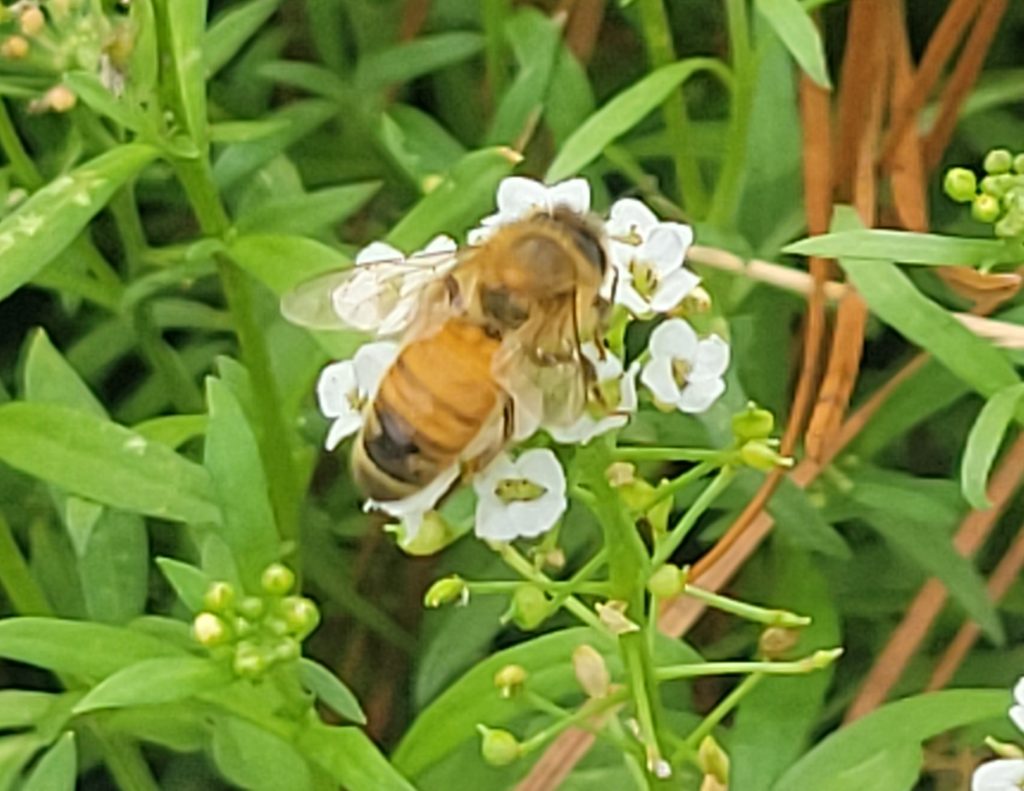
In the realm of pollinator-friendly plants, Sweet Alyssum (Lobularia maritima) often flies under the radar despite its remarkable qualities. This delicate flowering plant, with its clusters of tiny blooms, not only adds beauty to gardens but also serves as a vital resource for pollinators.
An exemplary instance is the hybrid series, Easy Breezy™, known for its compact size and remarkable heat tolerance, allowing it to thrive well beyond the spring season. Available in white, pink, and purple variations, this cultivar stands out. Another hybrid, known for its exceptional heat tolerance, is the white-flowering Lobularia ‘Inlbusnopr’, frequently marketed under the trademarked name Snow Princess®.
Let’s explore the many benefits of sweet alyssum as a pollinator crop and why it deserves a place in every garden.
Attractiveness to Pollinators
Sweet alyssum’s petite blossoms, exude a sweet fragrance that acts as a magnet for bees, butterflies, and other pollinating insects. Its nectar-rich flowers provide a vital food source for these creatures throughout the growing season.

Extended Blooming Period
One of the standout features of sweet alyssum is its prolonged blooming period, which often lasts from spring through fall in favorable climates. This extended flowering season ensures a consistent supply of nectar for pollinators, especially during times when other floral resources may be scarce.
Low Maintenance and Versatility
Sweet alyssum is renowned for its adaptability and ease of cultivation. It thrives in a variety of soil types and is tolerant of both drought and heat, making it an excellent choice for gardeners seeking low-maintenance pollinator-friendly plants. Whether grown in garden beds, containers, or hanging baskets, sweet alyssum adds charm and functionality to any landscape.
Companion Planting Benefits
Beyond its role as a pollinator crop, sweet alyssum offers additional benefits to gardeners through companion planting. Its compact growth habit and dense foliage act as a natural ground cover, suppressing weeds and conserving soil moisture. Furthermore, sweet alyssum is known to attract beneficial insects such as hoverflies and predatory wasps, which help control garden pests.
Encouraging Urban Pollination
In urban environments where green spaces may be limited, incorporating sweet alyssum into landscaping projects can play a significant role in supporting local pollinator populations. Whether in public parks, rooftop gardens, or community plots, the addition of sweet alyssum provides essential forage for pollinators and contributes to urban biodiversity conservation efforts.
Sweet alyssum’s unassuming beauty and pollinator-friendly characteristics make it an excellent educational tool for teaching about the importance of pollination and ecosystem dynamics. They may be small in stature, but its impact as a pollinator crop is undeniable. By incorporating this humble yet vital plant into our landscapes, we can create havens for pollinators and contribute to the preservation of biodiversity for generations to come. Let us embrace sweet alyssum as the unsung hero of pollinator crops.
For more information on sweet alyssum, contact your county Extension office.
Useful links:
Sweet Alyssum – University of Florida, Institute of Food and Agricultural Sciences (ufl.edu)
Flowering Annuals for Georgia Gardens.PDF (uga.edu)
- Winter Bliss and Climate Challenges in North Florida Gardens - December 11, 2025
- When the Ground Moves. - September 25, 2025
- Kalanchoe Species in Florida: Invasive Threats and Management - August 15, 2025
